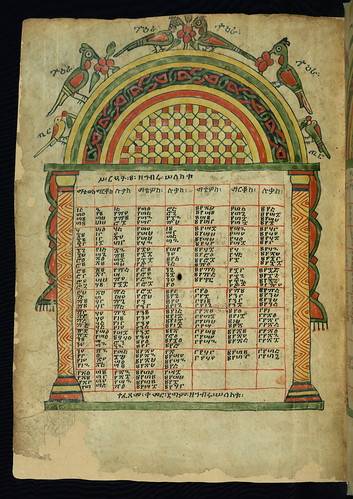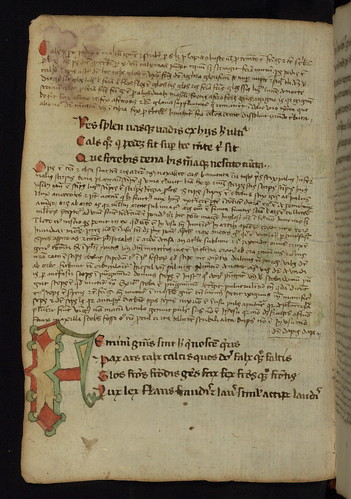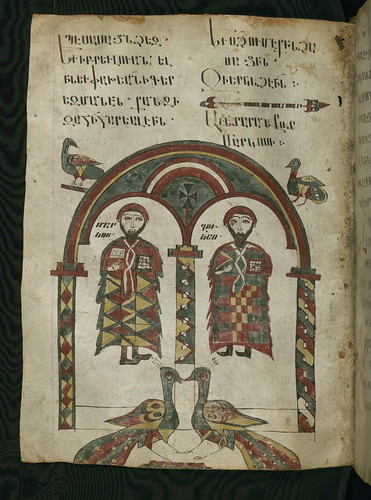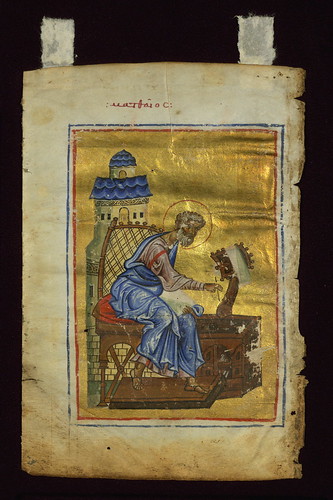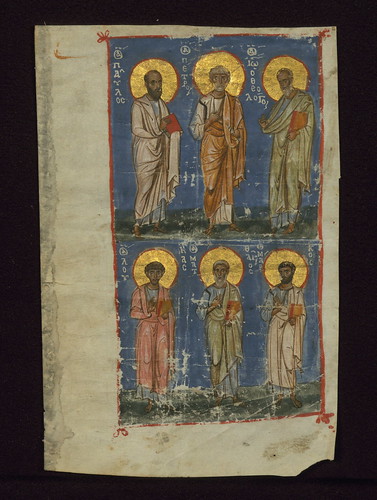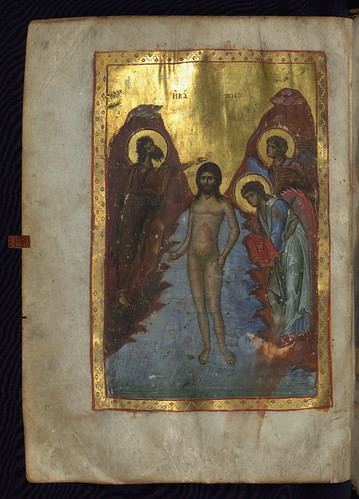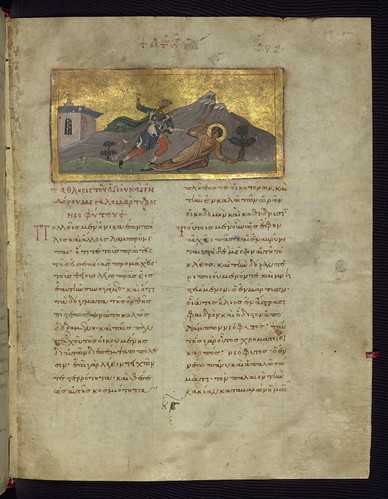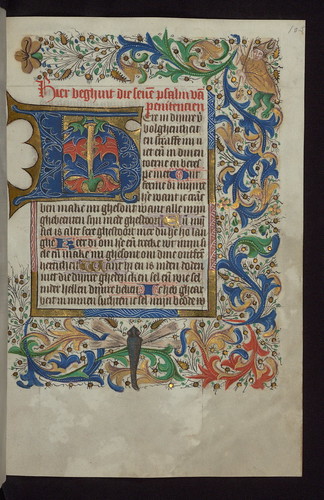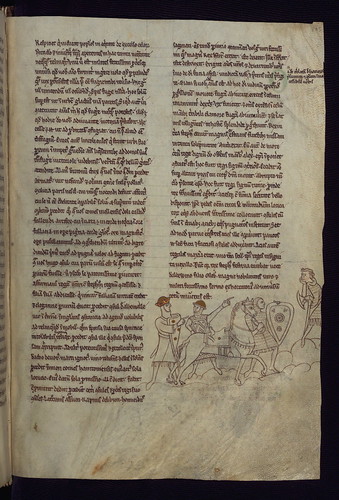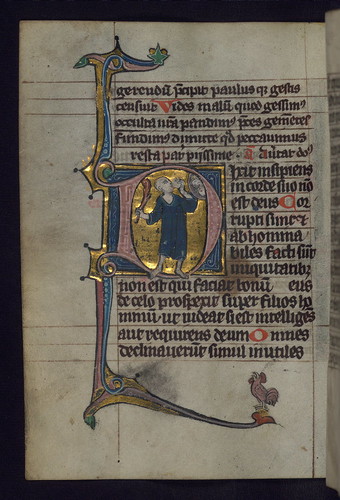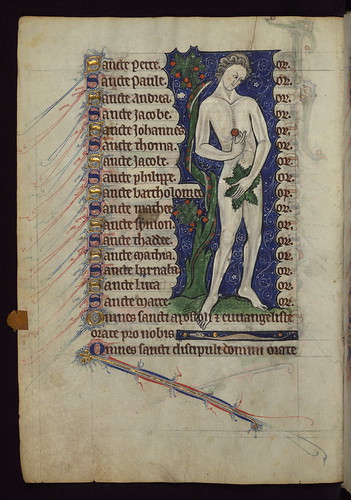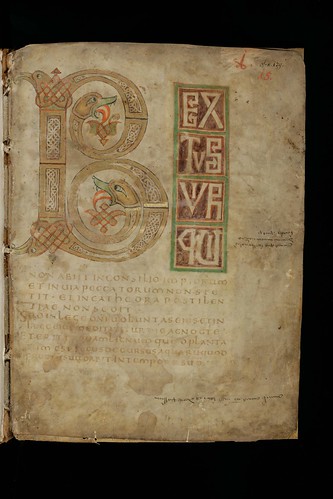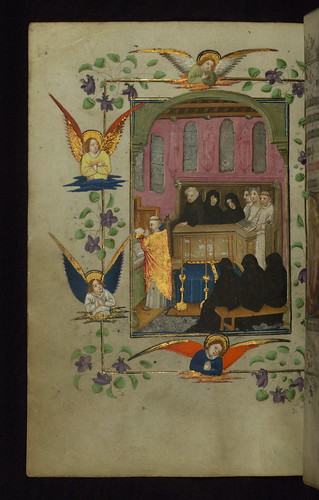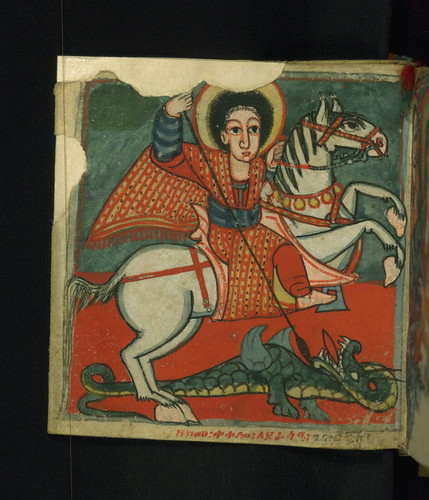
Gondarine sensul, St. George slaying the dragon, Walters Manuscript 36.10, fol. 2v, originally uploaded by Walters Art Museum Illuminated Manuscripts.
This Ethopian sensul, or "chain" manuscript, was made in the seventeenth century in the Gondarine region. It was created out of a single folded strip of parchment attached to heavy hide "boards" at each end, creating a small book when folded. Comprised solely of inscribed images, this pocket-sized manuscript would have served a devotional function for its owner, who while unidentified, inscribed the first image with a note reminding people under the threat of excommunication not to steal or erase the manuscript. Narrative illuminations, which tell the story of the Virgin Mary, allow for private meditation. The book can also function as something of an icon, for when it is opened to the middle and stood on end, the facing figures of St. George and the Virgin and Child form a small diptych, resembling other icons of this era.
